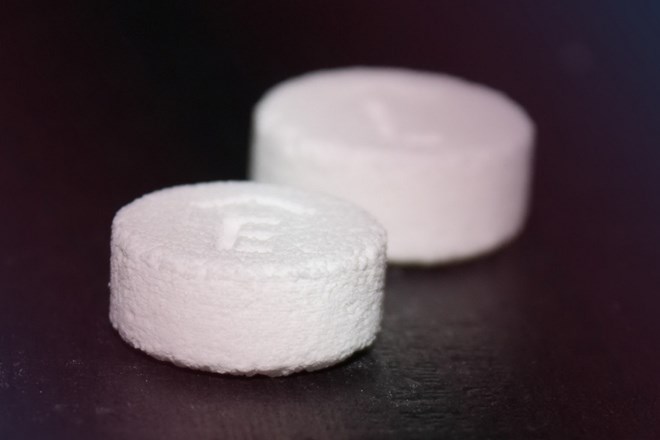The first pharmaceutical to use licensed 3D printing technology in the United States
The US Food and Drug Administration (FDA) on August 4 said it has granted the first license for a drug manufactured with 3D printing technology for the treatment of epilepsy.
The US licensed the first pharmaceutical product to use 3D printing technology
Ohio-based Aprecia pharmaceutical company says its printing system allows the production of pills with concentrations up to 1,000 mg / tablet.

Medication called Spritam is a tablet in the form of tablets used to treat seizures for epilepsy patients.(Source: forbes)
Medication called Spritam is a tablet in the form of tablets used to treat seizures for epilepsy patients .
Through the 3D printing process, the pills are made in a porous form, which can dissolve easily in a small amount of liquid, making the use of drugs more convenient for children as well as those with dysphagia.
Speaking to reporters, FDA spokesman Sandy Walsh said Spritam is the first drug produced by 3D printing technology approved by the agency. Spritam, also known as Levetiracetam, has been on the market for many years in various forms.
Previously, the FDA has also " green light " for some other medical products produced in 3D printing as artificial parts replaced in the human body.
As planned, Aprecia will begin distributing the drug in the first quarter of next year. The company also said in the future it will continue to apply this advanced technology to develop many other pharmaceuticals.
3D printing technology was invented in the 1980s of the last century, using lasers to create digitally designed metal or plastic objects. The superiority of this technology is to create and customize the device quickly with low cost.
In recent years, technology has grown rapidly and companies have been able to use them to shape complex objects from metals, such as titanium or aluminum.
Currently, the medical industry is promoting the application of this advanced technology to manufacture complex transplants for patients with rare or rare special injuries.
- 3D biological printing, pharmaceutical industry revolution
- Magic 3D printing technology
- Avian influenza vaccine is about to be circulated in the United States
- Build your house using 3D printing technology without using brick
- Learn about 3D printing technology
- Build a cluster of houses with the world's first 3D printing technology in the Netherlands
- Technology of printing cells of woodblock prints with the survival rate of nearly 100%
- Diversified 3D printing materials
- Unbelievable applications of 3D printing technology
- Uses 3D printing technology to create steel structures
- 3D printing gets both corneas and implants successfully, people really come to the future
- Recreate parts of the body with 3D printing technology
 Green tea cleans teeth better than mouthwash?
Green tea cleans teeth better than mouthwash? Death kiss: This is why you should not let anyone kiss your baby's lips
Death kiss: This is why you should not let anyone kiss your baby's lips What is salmonellosis?
What is salmonellosis? Caution should be exercised when using aloe vera through eating and drinking
Caution should be exercised when using aloe vera through eating and drinking